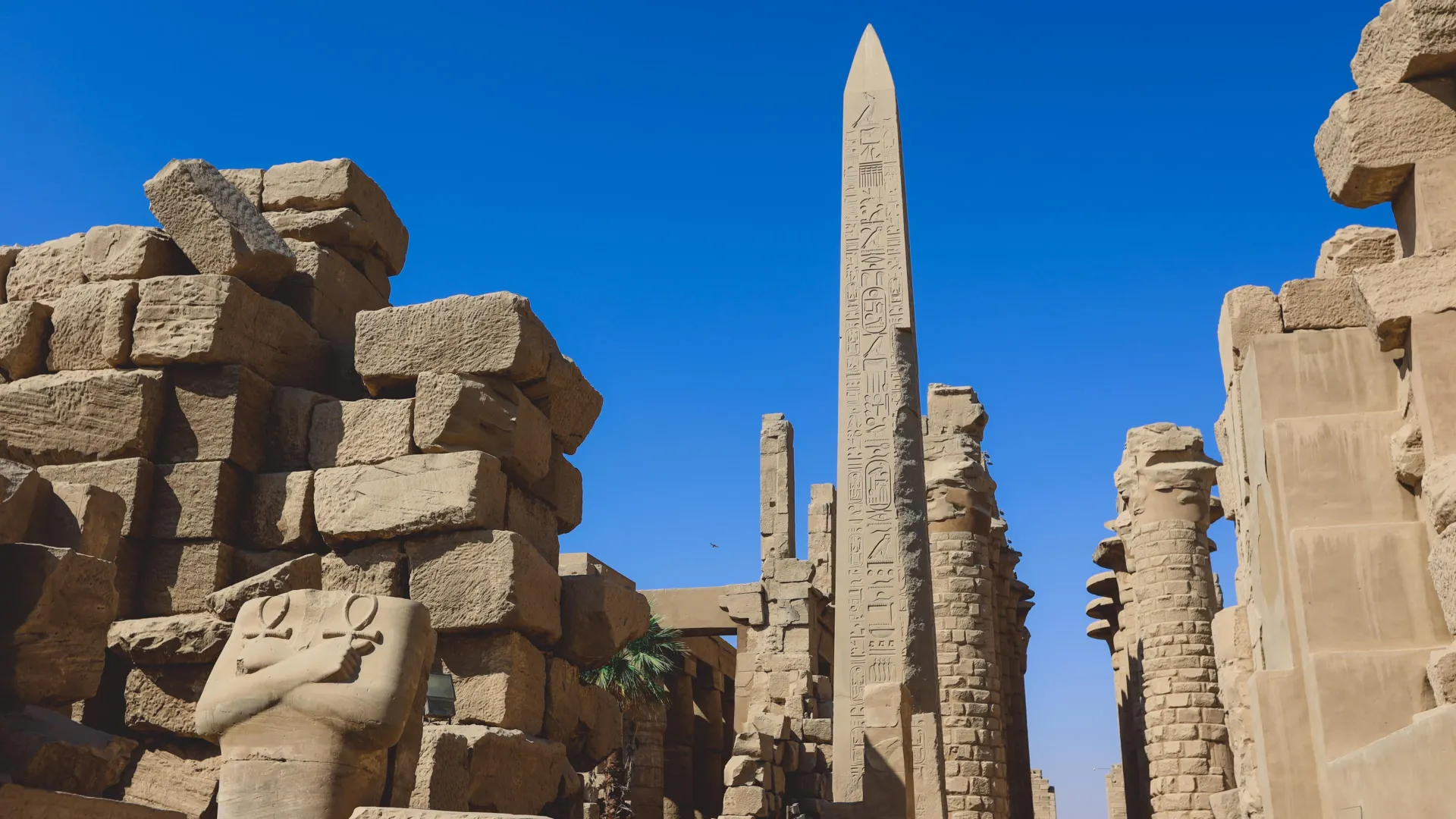3,000 years of secrets hidden beneath Egypt’s greatest temple
Most complete study of the temple complex and its landscape establishes earliest occupation and hints at link to creation myth.
- Date:
- October 6, 2025
- Source:
- University of Southampton
- Summary:
- A sweeping new geoarchaeological study has revealed how Egypt’s famed Karnak Temple complex rose from an island amid Nile floods to become one of the ancient world’s most enduring sacred centers. By analyzing sediments and pottery fragments, researchers traced its transformation across three millennia and uncovered evidence that its placement may have mirrored the ancient Egyptian creation myth—where the first land emerged from primeval waters.
- Share:

Researchers have completed the most detailed geoarchaeological investigation ever conducted at Egypt's Karnak Temple near Luxor, one of the largest and most visited temple complexes in the ancient world. The results, published in Antiquity today (October 6), shed new light on the temple's origins, its connection to ancient Egyptian creation stories, and how its riverside landscape evolved over thousands of years of human occupation.
"This new research provides unprecedented detail on the evolution of Karnak Temple, from a small island to one of the defining institutions of Ancient Egypt," explains Dr. Ben Pennington, lead author of the study and a Visiting Fellow in Geoarchaeology at the University of Southampton.
Karnak stands about 500 meters east of the modern Nile River in the ancient religious capital of Thebes.
Mapping the Ancient Landscape of Karnak
The international team, led by Dr. Angus Graham of Uppsala University and involving several researchers from the University of Southampton, examined 61 sediment cores from across and around the temple complex. Tens of thousands of ceramic fragments were also analyzed to help date the sediments and reconstruct the environmental history of the site.
Their work revealed how the Nile's channels and flood patterns shaped the terrain on which the temple developed. Before around 2520 BCE, the area was frequently inundated by fast-moving water, making permanent settlement impossible. The findings indicate that the earliest human activity at Karnak likely began during the Old Kingdom (c.2591-2152 BC). Pottery recovered from the site supports this, with the oldest fragments dating between approximately 2305 and 1980 BC.
"The age of Karnak Temple has been hotly contested in archaeological circles, but our new evidence places a temporal constraint on its earliest occupation and construction," said Dr. Kristian Strutt, co-author and University of Southampton archaeologist.
From Floodplain to Sacred Ground
The researchers found that the temple's foundation emerged when the Nile carved channels to its west and east, leaving an elevated island of stable land in the center. This natural rise provided a rare area suitable for early construction. Over centuries, the channels diverged further, creating more space for expansion as the temple grew into a vast religious complex.
Surprisingly, the study revealed that the eastern channel, previously considered less significant, was actually more clearly defined and possibly larger than the western one that earlier research had emphasized.
Dominic Barker, another co-author also from the University of Southampton added: "The river channels surrounding the site shaped how the temple could develop and where, with new construction taking place on top of old rivers as they silted up."
"We also see how Ancient Egyptians shaped the river itself, through the dumping of sands from the desert into channels, possibly to provide new land for building, for example."
Echoes of Egypt's Creation Myth
The discovery of an ancient island beneath Karnak closely aligns with Egyptian creation stories, suggesting that the temple's placement may have been chosen to reflect religious beliefs. Texts from the Old Kingdom describe the creator god emerging from high ground surrounded by water, a scene remarkably similar to the island on which Karnak was built -- the only such elevated area encircled by water known in the region.
"It's tempting to suggest the Theban elites chose Karnak's location for the dwelling place of a new form of the creator god, 'Ra-Amun', as it fitted the cosmogonical scene of high ground emerging from surrounding water," says Dr. Pennington.
"Later texts of the Middle Kingdom (c.1980-1760 BC) develop this idea, with the 'primeval mound' rising from the 'Waters of Chaos'. During this period, the abating of the annual flood would have echoed this scene, with the mound on which Karnak was built appearing to 'rise' and grow from the receding floodwaters."
Expanding Research Across Luxor's Sacred Landscape
With approval to investigate the wider floodplain around Luxor, the research team is now extending its fieldwork to other important sites in the region. The goal is to build a broader understanding of how shifting river systems and sacred geography shaped the rise of ancient Thebes, Egypt's religious heartland.
The Conceptual origins and geomorphic evolution of the temple of Amun-Ra at Karnak (Luxor, Egypt) is published in Antiquity and is available online.
The work was supported by the Knut och Alice Wallenbergs Stiftelse (KAW 2013.0163) and Uppsala Universitet (HUMSAM 2014/17), together with a small grant from M och S Wångstedts Stiftelse. The work was carried out under the auspices of the Egypt Exploration Society (London) with a permit from the Ministry of Tourism and Antiquities (Egypt).
Story Source:
Materials provided by University of Southampton. Note: Content may be edited for style and length.
Journal Reference:
- Benjamin Thomas Pennington, Angus Graham, Aurélia Masson-Berghoff, Marie Millet, Jan Peeters, Willem H.J. Toonen, Timotheus G. Winkels, Luke H. Sollars, Virginia L. Emery, Kristian David Strutt, Dominic Simon Barker. Conceptual origins and geomorphic evolution of the temple of Amun-Ra at Karnak (Luxor, Egypt). Antiquity, 2025; 1 DOI: 10.15184/aqy.2025.10185
Cite This Page: